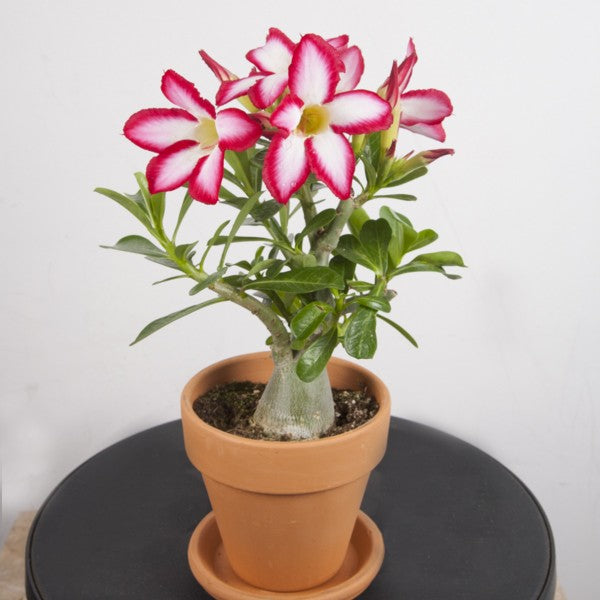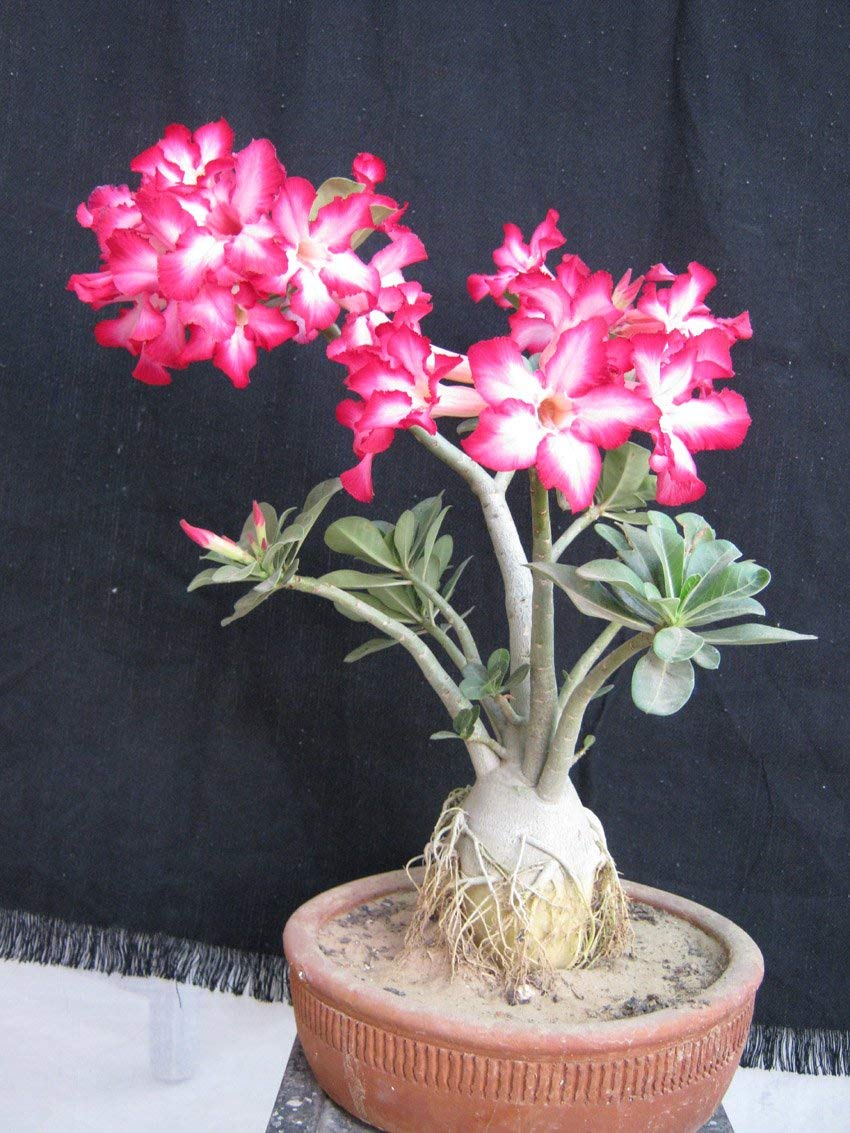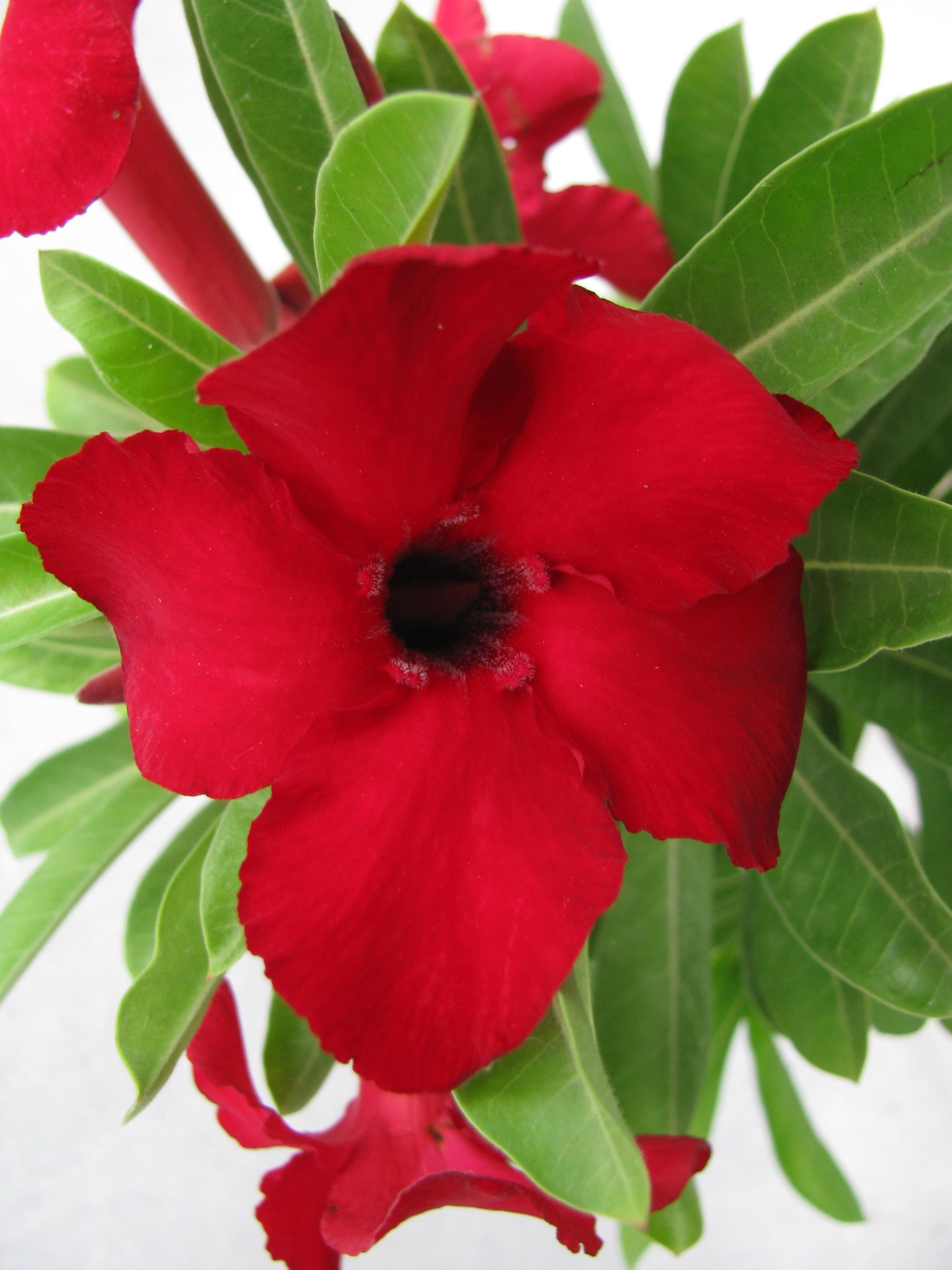



Green Paradise offers Beautiful Adenium Plants
About Adenium Plant
Adenium, also known as the desert rose or impala lily, is a succulent plant native to arid regions of Africa and the Arabian Peninsula. It belongs to the Apocynaceae family, which includes other popular plants such as oleander and frangipani. Adeniums are known for their striking appearance, with thick stems, fleshy leaves, and vibrant flowers.
Then are some crucial features and characteristics of the Adenium factory
Appearance:
Adenium plants are typically small to medium-sized, ranging from 1 to 3 meters (3 to 10 feet) in height. They have a unique swollen stem base, often referred to as a caudex or "fat trunk," which stores water to survive in dry conditions. The stems are grayish or brownish, and the leaves are glossy, leathery, and arranged in clusters at the branch ends.
Adenium, also known as the desert rose or impala lily, is a succulent plant native to arid regions of Africa and the Arabian Peninsula. It belongs to the Apocynaceae family, which includes other popular plants such as oleander and frangipani. Adeniums are known for their striking appearance, with thick stems, fleshy leaves, and vibrant flowers.
Flowers:
Adeniums produce beautiful, showy flowers that come in a variety of colors, including shades of pink, red, white, and occasionally yellow. The flowers are tubular with five petals and are often marked with contrasting patterns or stripes. They typically bloom in cycles, with each cycle lasting a few weeks.
Cultivation:
Adeniums are well-suited for warm, arid climates and are often grown as ornamental plants in gardens and as houseplants in containers. They require plenty of sunlight, ideally 6 to 8 hours of direct sunlight per day. Adeniums are drought-tolerant but do best with regular watering during the growing season while being allowed to dry out between waterings. They prefer well-draining soil, as excessive moisture can lead to root rot. These plants can be propagated from seeds, stem cuttings or by grafting.
Pruning and Shaping:
Adeniums can be pruned to maintain a desired shape and size. Pruning is often done during the dormant period, typically in late winter or early spring, to encourage branching and promote a bushier growth habit. However, take care when pruning as the sap of the adenium plant can be toxic and may cause skin irritation or allergies. It is advisable to wear gloves and protect yourself when handling the plant.
Maintenance:
Adeniums are generally low-maintenance plants. They are relatively pest-resistant but can occasionally be susceptible to aphids, mealybugs, or spider mites. Regular inspection of the plant and appropriate pest control measures, if necessary, can help keep them healthy.
Caution:
It's important to note that all parts of the adenium plant, especially the sap, contain toxic compounds. It is advisable to handle the plant with care, avoiding contact with eyes and mouth, and keeping it away from pets and children.
Adeniums are prized for their unique appearance and are highly valued by plant collectors and enthusiasts. With proper care, they can thrive and add a touch of tropical beauty to any garden or indoor space. The flowers are tubular with five petals and are often marked with contrasting patterns or stripes. They typically bloom in cycles, with each cycle lasting a few weeks.
How To Grow Adenium Plant
Growing an Adenium plant, also known as Desert Rose, can be a rewarding experience. These plants are known for their beautiful blooms and unique caudex (swollen trunk) shape.
Here are some steps to help you grow Adenium successfully:
Selecting the right location:
Adenium plants require plenty of sunlight, so choose a location that receives at least six hours of direct sunlight each day. Additionally, make sure the area has good air circulation.
Soil preparation:
Adeniums prefer well-draining soil with a slightly acidic to neutral pH. You can create a suitable potting mix by combining equal parts of regular potting soil, perlite, and coarse sand. This mixture will help prevent waterlogging, which can lead to root rot.
Choosing a container:
Select a pot or container that has good drainage holes to allow excess water to escape. Adeniums have a shallow root system, so a wide and shallow pot works best. Terracotta pots are ideal as they allow for better air circulation and water evaporation.
Planting process:
-
Fill the pot with the prepared potting mix, leaving enough space for the root ball.
-
Carefully remove the Adenium plant from its nursery container, trying not to disturb the roots excessively.
-
Place the plant in the center of the pot and backfill with additional potting mix, ensuring that the caudex is slightly above the soil surface.
-
Gently firm the soil around the plant to provide stability.




